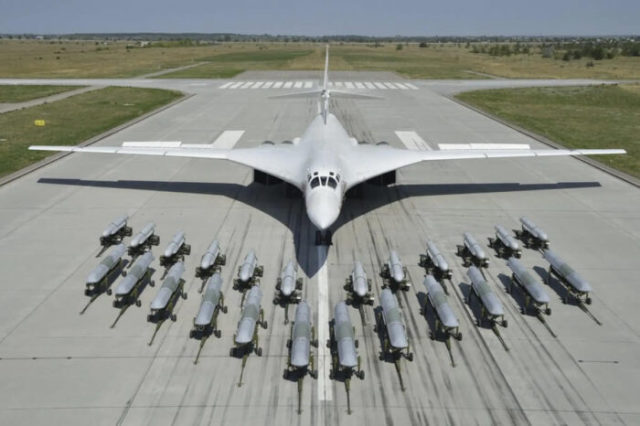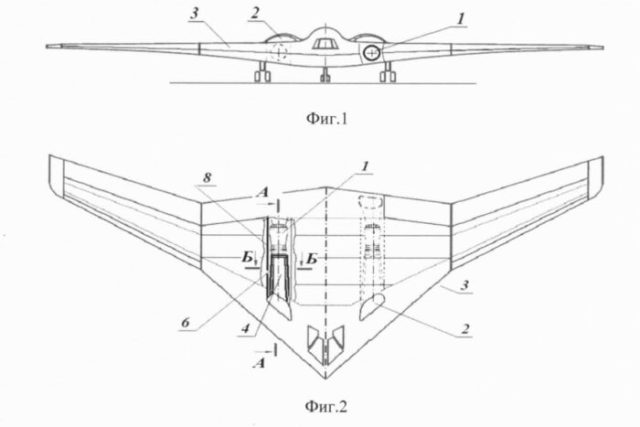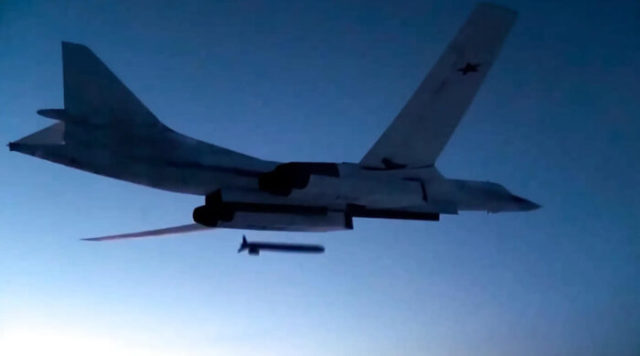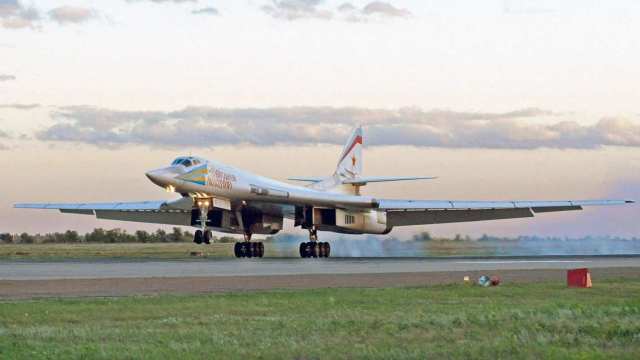Russia claims that it has introduced a new long-range X-BD air–launched cruise missile and that it is currently arming its Tu-160 strategic bombers with this weapon - this is the leitmotif of many Western media of recent days.
According to foreign publications, the mysterious X-DB has been under development for some time, but no confirmed images of it have appeared. Initially, the promising next–generation long–range aviation complex (PAK DA) was planned to be armed with Russian nuclear weapons, but, as in many Russian defense programs, the exact status of the missile - and the new bomber designed to carry it - remains unclear.
The discussion in the West around a promising long-range cruise missile was caused by the commander of the Long-range Aviation of the Russian Aerospace Forces, Lieutenant General Sergei KOBYLASH, who announced that the Tu-160 now carry the X-BD missile. He made his statement during a visit by North Korean leader Kim Jong-un and Russian Defense Minister Sergei SHOIGU to the Knevichi airfield, part of Vladivostok International Airport.
According to the Russian state news agency TASS, the Tu-160 is capable of carrying 12 new X-BD missiles in its internal weapon compartments – six on each of the two revolver-type launchers. However, the most noteworthy for foreign observers in terms of details about the missile was the general's statement that "[the bomber] carries an X-BD missile with a range of more than 6,500 km," which is equivalent to 4,000 miles.
According to sources, there were rumors earlier that the X-DB would provide about 50% longer range than the current cruise missile (KR) X-101 (according to the NATO classification AS-23A Kodiak), also used by the Tu-160 and allowing it to hit targets at a range of about 3,700 miles. If the figure given by the Commander of the Russian Aerospace Forces is correct, then the X-DB has an even longer range than expected.
Regarding the new generation long-range cruise missile itself, experts note that it was expected to be based on the existing X-101 and its nuclear version X-102 (AS-23B). This would guarantee the ability to install X-DB on existing internal Tu-160 launchers. In the photo published by the Russian Ministry of Defense, in which Kim Jong-un inspects the Tu-160 in Vladivostok, some missiles are indeed visible in the weapons compartment, although it is unclear whether these are really samples of X-DB or X-101/102.
If, analysts argue, the X-DB is an evolutionary development of the X-101/102, then at the moment it is unclear how it actually reaches a much longer range. One option is to miniaturize its internal components, including the warhead (warhead), which frees up space for more fuel to power its (supposed) turbojet engine. A more efficient engine and/or a different type of fuel could also contribute to greater reach, as could certain aerodynamic improvements.
The design of the X-101/102 is characterized by a small radar cross-section, which reduces the likelihood of its detection by enemy air defense systems, and the same characteristics are almost certainly expected to be found in the X-DB. On the other hand, the much larger promised range of the X-DB would somewhat negate the need for low observability.

A row of 12 KR VB series X-101/102 in front and another 12 KR X-55 behind them, with a Tu-160 bomber in the background
According to foreign sources, the first reports on the development of X-DB began to appear in 2017. Earlier, in August 2013, the Raduga company, based in Dubna, Moscow region, received a contract from the Ministry of Defense of Russia for R&D on X-DB, also known under the index "product 506", or under the program code name "Romance". According to this contract, flight tests of the new rocket were planned to begin in 2018 and complete state acceptance tests in 2020. However, presumably, this schedule was not met.
In addition, if it is true that the Tu-160 now carries the X-DB, this does not mean that the missile has finally passed state acceptance tests and has actually entered service. It is likely that the missile is still undergoing tests, which will eventually also include various test firing at simulated targets. Since no details about any such missions have been reported so far, they may well be at a relatively early stage.
Ultimately, analysts say, the X-DB is designed to arm both the Tu-160 and the long-awaited Russian bomber of the new generation PAK DA. The status of this equally mysterious aircraft is largely unclear. At the same time, there is no doubt that its launch has been significantly postponed, and at this stage there is no guarantee that the program will lead to the creation of a combat-ready aircraft, at least in the near future.

Drawing in two angles of the possible configuration of the PAK YES
Meanwhile, it is noted that the Tu-160 returned to production after the initial production efforts were discontinued by 1995. The first sample of the Tu-160M from the new batch took to the air in January 2022. It is believed that the resumption of work on the Tu-160 with a rotary wing in a modernized form is primarily intended as a temporary measure due to delays in the PAK DA program.

The first Tu-160M manufactured at the Kazan Aviation Plant in the Republic of Tatarstan
An official order for 10 new Tu-160M2 was placed in 2018, while the Russian Aerospace Forces announced a total need for at least 50 aircraft of the new assembly, although no additional orders have been placed so far. Meanwhile, the current fleet of these bombers consists of 17 original Tu-160, which is a very modest force in terms of quantity.
It seems likely, experts say, that eventually the X-BD long-range cruise missile can replace both the X-101 with conventional weapons (which was used in battles over Syria and in the war in Ukraine) and the X-102 with a nuclear warhead. It should also allow replacing the Cold War-era X-55 (AS-15 Kent) and its non-nuclear variant, the X-555 (AS-22 Kluge), the latter is also widely used in Ukraine.

Tu-160 launches KR X-555 with a conventional warhead at a target during exercises
Although very few other details are known about the capabilities of the missile, its extended range is undoubtedly a key feature.
The maximum firing range of the current X-101 missile is reported to be between 1,864 and 2,485 miles (3,000-4,000 km), and the X-102 is said to be able to fly somewhat further, thanks to its lighter warhead.
Assuming an X-101/102 flight range of 2,485 miles, the Tu-160 can remain deep in Russian airspace and still retain the ability to hit targets almost anywhere in Europe. Even flying directly over the Tu-160 air base (AvB) in Engels, in central Russia, allows you to put at risk a significant part of Western Europe, with the exception of southern Spain.

Targets within range of the X-101/102 fall into the yellow circle, based on the estimated maximum range of 2,485 miles and the launch of the KR directly over the Tu-160 AvB in Engels
Even the shorter range of 1,864 miles means that the Tu-160 can hit targets in most of Europe when the plane flies over the western part of Russia.

Targets within range of the X-101/102, based on a more modest estimated range of 1,864 miles. The place of the rocket launch is above the AVB Engels.
The introduction of the X-DB, which is said to have a range of more than 3,700 miles, opens up a completely new set of targets, especially if the Tu-160 is deployed, for example, on AVB in the Russian Arctic, from where combat missions against North America can be set. If the PAK DA, which is expected to have unobtrusive characteristics, finally enters service, it will provide an even more powerful strike platform in combination with the X-BD long-range missile.
Significantly increased range of the X-DB, based on the claimed range of 3,700 miles. The launch point is AVB Engels.
Even if the X-DB is launched, for example, from bombers operating in the vicinity of Engels, it will also give advantages, including the ability to return to base for a quick recharge and take off to launch another wave of missiles.

The X-BD missile with a range of 3,700 miles, launched from the advanced AVB in Anadyr, in the far north of Russia, puts a significant part of North America at risk. Tu-95MS bombers use Anadyr as a deployment base. The Tu-160 first landed there in 2018.
But whatever the current status of the X-DB, it is believed in the West, it is worth being cautious about the statements of the Russian Defense Ministry about its "new" weapons programs. It is believed that many of them exaggerate their capabilities, while others disappear altogether, becoming victims of changing priorities, excessive technical ambitions or competition for funds.
In favor of the new long-range cruise missile is the fact that in Russia, as a rule, a high priority is given to long-range aviation and strategic weapons in general. At the same time, X-101 stocks are clearly being depleted at an incredible rate due to the war in Ukraine. Since these stocks need to be replaced, now may be a good time to introduce a new and more powerful missile, especially if it is, in fact, a further evolution of the X-101/102.
Another question of experts concerns the dependence of X-DB on components supplied from abroad. Numerous reports indicate that the production of high-tech weapons, such as the KR, has become much more complicated due to the sanctions imposed on Russia, since weapons of this kind, as a rule, largely depend, for example, on Western microchips. Therefore, it should be found out whether the X-DB design includes any measures to circumvent these restrictions.
Experts suggest waiting for more detailed information about the X-DB and the first confirmed presentation of a new weapon. Since Russian long-range cruise missiles remain the preferred weapon in the war in Ukraine, if the X–DB is close to the start of operation, there is a high probability of seeing this CD in action already in this conflict.
According to the materials of the resource thedrive.com


